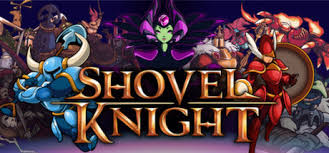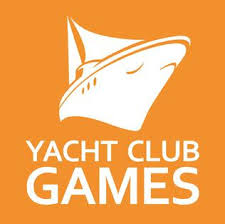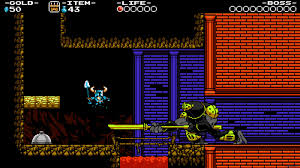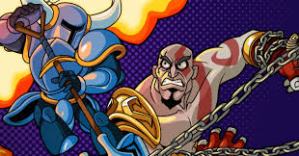Harvest Moon 64 is a farm simulator and RPG that was released in 1999 for Nintendo 64. The game revolves around the player taking over his grandpa’s farm after his death. You are told by your father that you are to improve the farm and he will be back in three years to check your progress. Once you take control, you are able to do a vast amount of activities to make money and improve your farm. By using tools that upgrade the more you use them, you can destroy unsightly rocks, pull weeds, and hoe areas to get ready to plant vegetables. You have a barn where you keep chickens and cows, and the more you take care of them, the higher grade their eggs and milk will be, selling for more money. The game is not restricted to the farm, but there is the local village where you can buy supplies, and also socialize with villagers to improve relationships by helping them. Harvest Moon 64 is a very deep and entertaining game, so it is not surprising that it took quite a few people to author it. Not only can the creator take credit for birthing the idea, but also the many workers at the game developer, translators, and the music composer who added to the experience we share when we play the game. The authors of Harvest Moon 64 are: Yasuhiro Wada, Victor Interactive Software, Natsume Inc., and Tsuyoshi Tanaka for they are responsible for the experience and aesthetics of the game as a whole.
Yasuhiro Wada came up with the idea for what is now Harvest Moon. Coming from a small country area in Japan, he thought it was a good idea to show how different, and also what good life lessons can come from farm living. Not only does being the lone person to think of the idea make him an author, but how his interpretation of traditional Japanese values placed into the game makes us feel when we play. Harvest Moon 64 is an aesthetically pleasing experience. When playing, the emotion or feeling of doing well for your grandpa is a strong motivator. You are given a farm after his death, and your job is to improve it and continue the heritage of the farm. These values tie into traditional Japanese culture where people still pay tribute to their ancestors after death. Some Japanese families keep altars at home where they put out food and usually have pictures of the ancestor to show remembrance. Yasuhiro Wada adds this element to HM64 by introducing the game as you return from your grandpa’s funeral. Not only are you trying to do well for your grandpa, but you are ‘cleaning’ his site, which is full of weeds and rocks to begin, to show thanks, appreciation of your past relatives, and to make them proud. The main objective ties into cultural traditions making it contain more than just farming mechanics, but a sense of responsibility you take when you accept the role of player. An emotional attachment to your progress is felt as you work hard in the memory of your grandpa to make him proud. Wada’s idea of values that are presented in HM64 make him an author due to his creative ability and unique narrative that stand out to be very important to the story and experience you have when playing.
 The substance of Harvest Moon 64 was brought to life by the game developer Victor Interactive Software Inc. Many people worked on the coding, the debugging, and visually made HM64 what it is. The art style, animations, sound effects, and mechanics of the game were produced by their team. Although the team takes the idea of Yasuhiro Wada, they are responsible for how the game is structured and looks. This is important in games that can become repetitive. Making the game more visually appealing not only adds to the totality of the project, but also adds to the aesthetics of the experience by creative animations that make you feel something is being done instead of just being simulated. John Sharp sums up what makes HM64 a strong artgame by saying “Artgames use the innate properties of games–among them interactivity, player goals, and obstacles providing challenge for the player–to create revealing and reflective play experiences”(Works of Game, 2015). Harvest Moon 64 contains all of these natural aspects of game and they all combine to make a reflective play experience. Without all of these authors contributing to the complete work, the game would not play the same, and probably would not be the highest rated Harvest Moon by Nintendo Power. The team at Victor Interactive developing on Nintendo 64 had individuals responsible for different parts of the game, but the combined work of these individuals at that time made HM64 what it is as a game and as an experience.
The substance of Harvest Moon 64 was brought to life by the game developer Victor Interactive Software Inc. Many people worked on the coding, the debugging, and visually made HM64 what it is. The art style, animations, sound effects, and mechanics of the game were produced by their team. Although the team takes the idea of Yasuhiro Wada, they are responsible for how the game is structured and looks. This is important in games that can become repetitive. Making the game more visually appealing not only adds to the totality of the project, but also adds to the aesthetics of the experience by creative animations that make you feel something is being done instead of just being simulated. John Sharp sums up what makes HM64 a strong artgame by saying “Artgames use the innate properties of games–among them interactivity, player goals, and obstacles providing challenge for the player–to create revealing and reflective play experiences”(Works of Game, 2015). Harvest Moon 64 contains all of these natural aspects of game and they all combine to make a reflective play experience. Without all of these authors contributing to the complete work, the game would not play the same, and probably would not be the highest rated Harvest Moon by Nintendo Power. The team at Victor Interactive developing on Nintendo 64 had individuals responsible for different parts of the game, but the combined work of these individuals at that time made HM64 what it is as a game and as an experience.
Natsume Inc. is an author of Harvest Moon 64 because they are responsible for translating the game into English. Without the work of Natsume’s team, many people outside of Japan would not be able to experience Harvest Moon. The work they add to the game opens the experience to many other people rather than just one population. Funny enough, Natsume misspells their own name on the main menu of Harvest Moon 64 as Natume. Even with some translation errors on the main menu and in the game, my experience and the experience of millions of others would not have been possible if it was not for their work. This shows that without working on the ‘game’ aspect, even translations add to the total project and decide who can take part and experience different art and games and how.
Even with some translation errors on the main menu and in the game, my experience and the experience of millions of others would not have been possible if it was not for their work. This shows that without working on the ‘game’ aspect, even translations add to the total project and decide who can take part and experience different art and games and how.
The last author of Harvest Moon 64 is Tsuyoshi Tanaka, who is the lone composer of the game. Music in simulation games is very important. With the chore of waking up everyday, weeding the farm, watering all the plants, feeding and caring to the animals, it gets repetitive. Without music, or using music that lacks variation or catchy melodies, a simulation game will not be as fun. Not only can the quality of the music affect the outcome of how fun a game is, but it definitely adds to the immersion and experience of the game. The soundtrack’s variations from folk music mixtures of midi-esque music and percussion not only help it as a game, but as an experience. Each location on the map: the village, the mountain, the beach, the farm; they all have their own music and it changes at night as well. You have a different feeling depending on the time and location where you are because the music is made to help you transition in game from moment to moment. The tone and style of music help you understand the current situation by eliciting feelings that are not possible with written cues. The village during festivals has faster percussive music to signify how bustling the town is. The booming horns make it seem something official is taking place. The work of Tanaka not only helped HM64 as a game with his compositions, but also as an experience by depicting certain moods with his productions. This allows us to feel closer to the game and understand the changes in seasons and events.
All of these people added to a singular project, and a lot of them will never be recognized as a true ‘author’ of the work. It is important to showcase how many people deeply impact the outcome of a game or any medium while we do not give it much thought. Many hours or coding, composing, and animating all made HM64 the game that it is. Harvest Moon 64 was one of the first games I was truly addicted to. I would stay up late on the weekends trying to get to the next festival or to level up my cows to golden level milk and growing vegetables. It was so deep and entertaining that you could focus to many aspects such as relationships around town and socializing to getting married, selling items by farming, fishing, and scavenging, or horse betting and getting drunk at the bar. All of these are possible experiences due to the collective work of many people. With one of these authors not included, the game would not exist as it does and would not be as great as it is.
Sharp, J. (2015). Works of Game. MIT.
 For those who don’t know, NBA 2k16 is a simulated basketball video game developed by Visual Concepts and published by 2k Sports. Throughout the years Visual Concepts have done a marvelous job at enhancing their video game graphics, sounds, dynamics and etc. Consequently, consumers, like me, have more of an incentive to continue playing the game because it is fun! Specifically, NBA 2k16 has exceeded their expectations by allowing the film director and producer, Spike Lee, to direct and write a portion of NBA 2k16. Within the videogame there is a single player option (MyCareer Mode) that allows the player to create his/her own NBA character. More so, this character will get to experience a career of an NBA player who gets to travel, play games, go to practice, talk to the media and etc. Nonetheless, Spike Lee has made this year’s edition more special by altering MyCareer Mode to making it more narrative-oriented. I believe that Spike Lee presented himself as a phenomenal artist because he has elevated the player’s experience greatly by giving a more in depth view of an NBA player’s life.
For those who don’t know, NBA 2k16 is a simulated basketball video game developed by Visual Concepts and published by 2k Sports. Throughout the years Visual Concepts have done a marvelous job at enhancing their video game graphics, sounds, dynamics and etc. Consequently, consumers, like me, have more of an incentive to continue playing the game because it is fun! Specifically, NBA 2k16 has exceeded their expectations by allowing the film director and producer, Spike Lee, to direct and write a portion of NBA 2k16. Within the videogame there is a single player option (MyCareer Mode) that allows the player to create his/her own NBA character. More so, this character will get to experience a career of an NBA player who gets to travel, play games, go to practice, talk to the media and etc. Nonetheless, Spike Lee has made this year’s edition more special by altering MyCareer Mode to making it more narrative-oriented. I believe that Spike Lee presented himself as a phenomenal artist because he has elevated the player’s experience greatly by giving a more in depth view of an NBA player’s life.


 rface, airplane casual control, basic landing and takeoff, basic weapons and flares and a few more. In the bottom left screen is your joystick to control the speed and direction of the plane, you also tilt the phone to control its direction. The plane was very difficult to control for me; it took time to get use to it. Once you finish with the tutorials and feel like you are
rface, airplane casual control, basic landing and takeoff, basic weapons and flares and a few more. In the bottom left screen is your joystick to control the speed and direction of the plane, you also tilt the phone to control its direction. The plane was very difficult to control for me; it took time to get use to it. Once you finish with the tutorials and feel like you are
 story writer of again a book. We also assume there is just one author. For example, Suzanne Collins might be well known by many for the series of The Hunger Games. We loved the authors work so much it was made into movies. See, this game has an author as well but not just one, in fact this game has several authors. The company
story writer of again a book. We also assume there is just one author. For example, Suzanne Collins might be well known by many for the series of The Hunger Games. We loved the authors work so much it was made into movies. See, this game has an author as well but not just one, in fact this game has several authors. The company 











 The substance of Harvest Moon 64 was brought to life by the game developer Victor Interactive Software Inc. Many people worked on the coding, the debugging, and visually made HM64 what it is. The art style, animations, sound effects, and mechanics of the game were produced by their team. Although the team takes the idea of Yasuhiro Wada, they are responsible for how the game is
The substance of Harvest Moon 64 was brought to life by the game developer Victor Interactive Software Inc. Many people worked on the coding, the debugging, and visually made HM64 what it is. The art style, animations, sound effects, and mechanics of the game were produced by their team. Although the team takes the idea of Yasuhiro Wada, they are responsible for how the game is  Even with some translation errors on the main menu and in the game, my experience and the experience of millions of others would not have been possible if it was not for their work. This shows that without working on the ‘game’ aspect, even translations add to the total project and decide who can take part and experience different art and games and how.
Even with some translation errors on the main menu and in the game, my experience and the experience of millions of others would not have been possible if it was not for their work. This shows that without working on the ‘game’ aspect, even translations add to the total project and decide who can take part and experience different art and games and how.